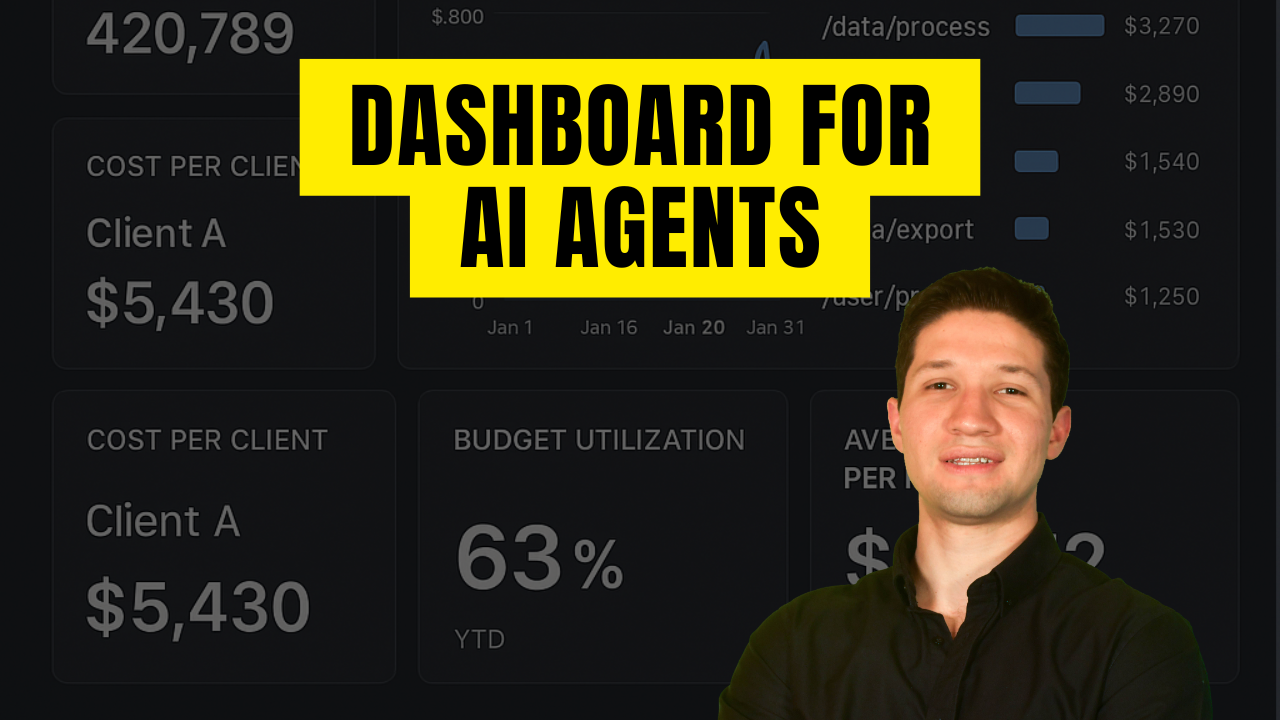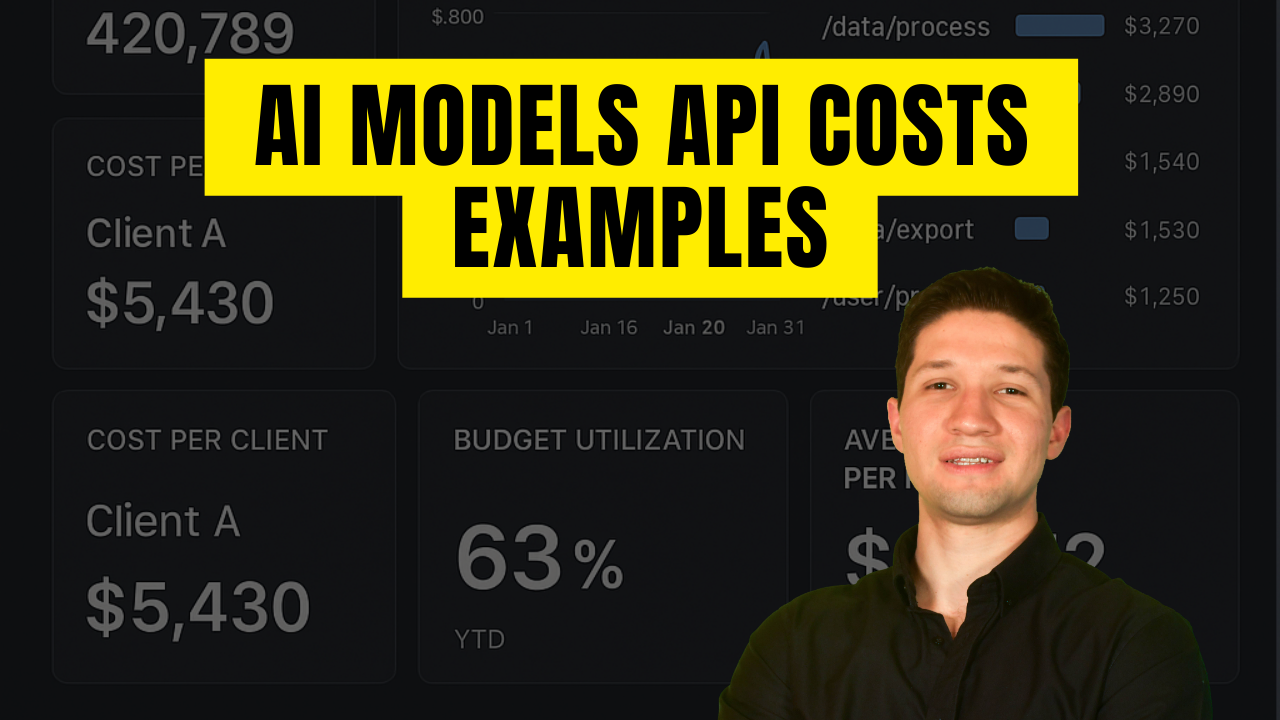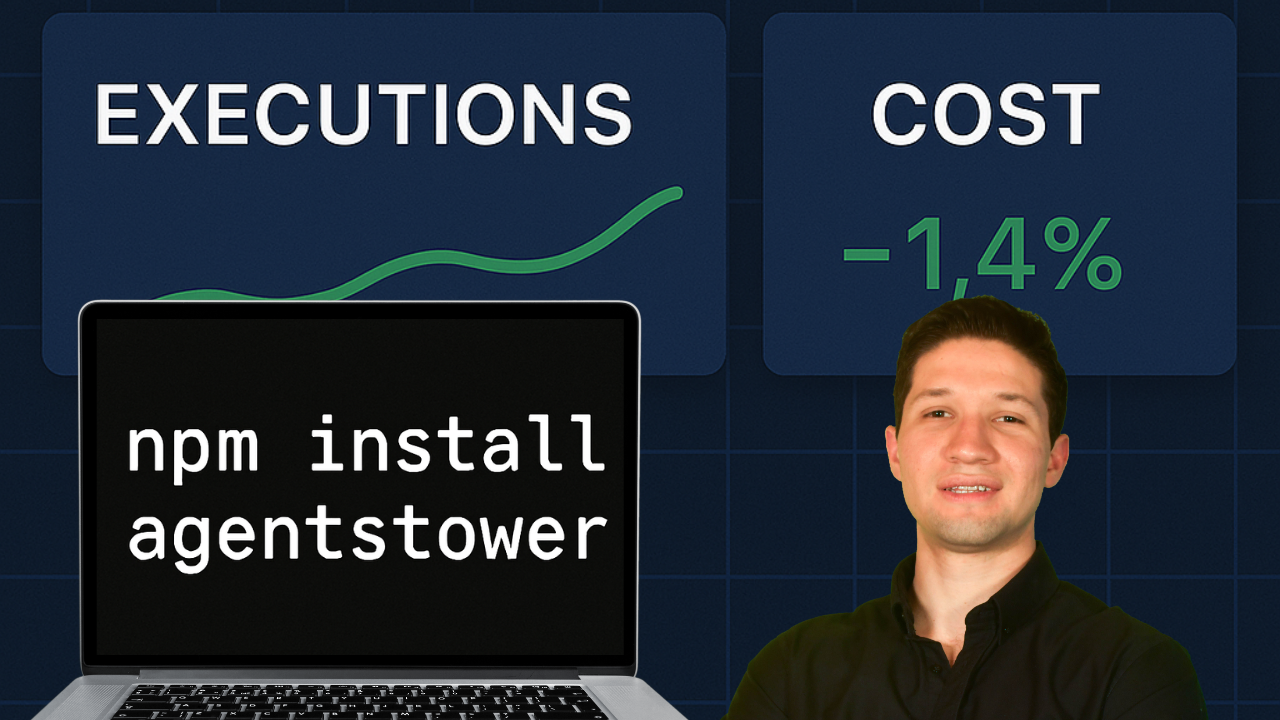Building with AI is a total game changer.
You're creating amazing things, pushing boundaries, and maybe even building the next big thing using models from OpenAI or another provider. It's exciting stuff.
But then the bill comes. And it can be a bit of a shock.
Let's be honest, AI API costs can feel like a black box. You make calls, you get results, but figuring out exactly how much each feature or user is costing you can be a nightmare. Those costs can spiral out of control before you even know it, putting your entire project at risk.
What if you could see exactly what’s happening? What if you had a live dashboard showing you every single dollar, every token, and the execution time of your API calls?
That's what I'm going to show you today. I'm going to walk you through how to use a simple, free tool that my team and I built to get a complete handle on your AI API usage. You'll be able to control AI API costs and make sure your budget stays right where you want it.
Ready to get started? Let's dive in.
Why You Absolutely Need to Monitor Your AI API Costs
So, why is this so important? You might think, "I'll just check my monthly bill from OpenAI." But by then, it's too late. The money is already spent.
The problem with waiting for the monthly invoice is that you have no real time visibility. You're flying blind. You don't know which specific API calls are the most expensive. You can't tell if a new feature you just launched is secretly draining your budget. You can't pinpoint inefficiencies.
Here’s what happens when you don't actively monitor your AI spending:
- Unexpectedly High Bills: A small bug or an inefficient prompt can lead to thousands of extra API calls. This can translate into a bill that’s 10x higher than you expected. I've seen it happen.
- No Room for Optimization: If you don't know which parts of your application are using the most tokens or taking the longest to execute, how can you improve them? You can't optimize what you can't measure.
- Poor User Experience: Slow API calls can lead to a laggy application. Tracking execution time helps you identify and fix these bottlenecks, keeping your users happy.
- Stalled Growth: When you're constantly worried about costs, you hesitate to build new features or scale up your service. Gaining control over your spending gives you the confidence to grow your project.
Effective AI cost management isn't about spending less. It's about spending smarter. It's about understanding your usage so you can build a sustainable, scalable, and profitable AI-powered application. Without this data, you're just guessing, and guessing is a terrible business strategy.
Introducing AgentsTower: Your AI Cost Control Dashboard
Okay, so you're convinced you need to track your usage. But how do you do it without building a complex logging and analytics system from scratch?
That's where AgentsTower comes in.
AgentsTower is a tool we built for one simple reason: we needed to solve this exact problem for our own projects. It's an npm package that you can add to your Node.js application in minutes. Once it's set up, it gives you a beautiful, real time dashboard that visualizes all your critical AI API metrics.
You can see it in action right here. This is a live dashboard from one of my projects. Every time I make an API call, this dashboard updates instantly.
With this dashboard, you get immediate answers to questions like:
- How much have I spent today? This week? This month?
- Which AI model is costing me the most?
- How many input and output tokens is a specific function using?
- What's the average execution time for my API requests?
This isn't some complicated enterprise software. It's a lightweight, developer friendly tool designed to give you the insights you need without the headache. There's no logging of your prompts or completions. We don't see your data. We just calculate the usage and send the metrics to your private dashboard.
It's the easiest way to start making data driven decisions about your AI API usage.
How to Set Up AI Cost Tracking in Under 10 Minutes
Ready to get your own dashboard? I'm going to walk you through the entire process. It’s surprisingly fast. We're going to use a Node.js project as an example, but the concept is simple. You just need to wrap your API call with our tracker.
Here are the five simple steps.
Step 1: Create a Free AgentsTower Account and Get Your API Key
First things first, you need an account and an API key. This key is what connects your application to your dashboard.
- Go to agentstower.com and sign up. It’s free.
- Once you're in your new, empty dashboard, look for a button that says "Create API Key".
- Click it, and your unique API key will be generated.
This is super important: Copy this key and save it somewhere safe immediately. For security reasons, you will only be shown this key once. If you lose it, you'll have to generate a new one.
Step 2: Install the AgentsTower npm Package
Now, let's add the package to your project. Open your terminal, navigate to your project's directory, and run this simple command:
npm install agentstowerThat’s it! The package is now installed and listed in your `package.json` file. You're ready to start using it in your code.
Step 3: Add Your API Key to Your Project's Environment
You never want to paste secret keys directly into your code. It's a major security risk. The best practice is to use environment variables.
In the root of your project, you likely have a file named `.env`. If you don't, create one. Inside this file, add your AgentsTower API key like this:
AGENTS_TOWER_API_KEY="your-copied-api-key-goes-here"Just replace `"your-copied-api-key-goes-here"` with the actual key you copied in step 1. Your application can now securely access this key without exposing it in your source code.
Step 4: Load the API Key into Your Application Code
Now we need to tell our application how to find and use this key. The exact way you do this depends on your project's structure, but typically you'll have a configuration file where you load all your environment variables.
For example, you might have a `config.js` file that looks something like this:
// In your config file (e.g., config.js)
const agentsTowerApiKey = process.env.AGENTS_TOWER_API_KEY;
module.exports = {
agentsTowerApiKey,
// ... your other config variables
};This code reads the `AGENTS_TOWER_API_KEY` from your environment and makes it available to be used anywhere in your project.
Step 5: Wrap Your Existing AI API Call
This is the final and most important step. You need to find where in your code you make the call to the AI API (for example, `openai.chat.completions.create`).
You don't need to rewrite anything. You just need to wrap your existing call inside the `agentsTower.track` function. This function starts a timer, executes your code, and then sends the performance metrics to your dashboard when it's done.
First, you'll need to initialize AgentsTower in that file, passing in your API key:
const AgentsTower = require('agentstower');
const config = require('../config');
// Path to your config file
const agentsTower = new AgentsTower({
apiKey: config.agentsTowerApiKey,
});Now, let's look at a before and after. Here is what a standard OpenAI API call might look like:
// BEFORE: Your standard API call
const completion = await openai.chat.completions.create({
messages: [{ role: "system", content: "You are a helpful assistant."
}],
model: "gpt-3.5-turbo",
});And here is the exact same code wrapped with the AgentsTower tracker:
// AFTER: The same call, now being tracked
const completion = await agentsTower.track(
() => openai.chat.completions.create({
messages: [{ role: "system", content: "You are a helpful assistant." }],
model: "gpt-3.5-turbo",
}));See how simple that is? You're just passing your original API call as a function into `agentsTower.track()`. That's all. You're done!
Watch Your AI Usage Data Roll In
Now for the fun part.
Go ahead and run your application. Make an API call, just like you normally would. Now, go back to your AgentsTower dashboard and refresh the page.
Boom. You'll see your first data points appear. You'll see the cost of that single call, the number of tokens it used, and how long it took to complete, down to the millisecond. It's working!
As you and your users continue to use your application, this dashboard will come to life. You'll see:
- Total Costs: A running total of your spending, giving you a clear picture of your burn rate.
- Token Counts: Separate counts for input and output tokens, helping you understand prompt efficiency.
- Average Execution Time: Spot performance bottlenecks before your users do.
- Model Usage: See which models you're using and how their costs compare. Maybe a cheaper model works just as well for certain tasks? Now you can find out.
This dashboard transforms your AI development budget from a mysterious expense into a clear, manageable, and optimizable resource. You're no longer in the dark. You're in complete control.
Conclusion
If you're building with AI, you can't afford to ignore your API costs. It's the single biggest factor that can make or break your project's viability. But managing it doesn't have to be a complicated, time consuming chore.
As we've just seen, you can get a powerful, real time cost and performance dashboard up and running in just a few minutes. All it takes is a free AgentsTower account and a few lines of code.
Taking control of your AI spending gives you the freedom and confidence to build bigger and better things. You can experiment, scale, and grow without the constant fear of an unexpected bill.
So, what are you waiting for? Stop guessing and start measuring.
What's the first thing you want to know about your AI API usage? Let me know in the comments below!


